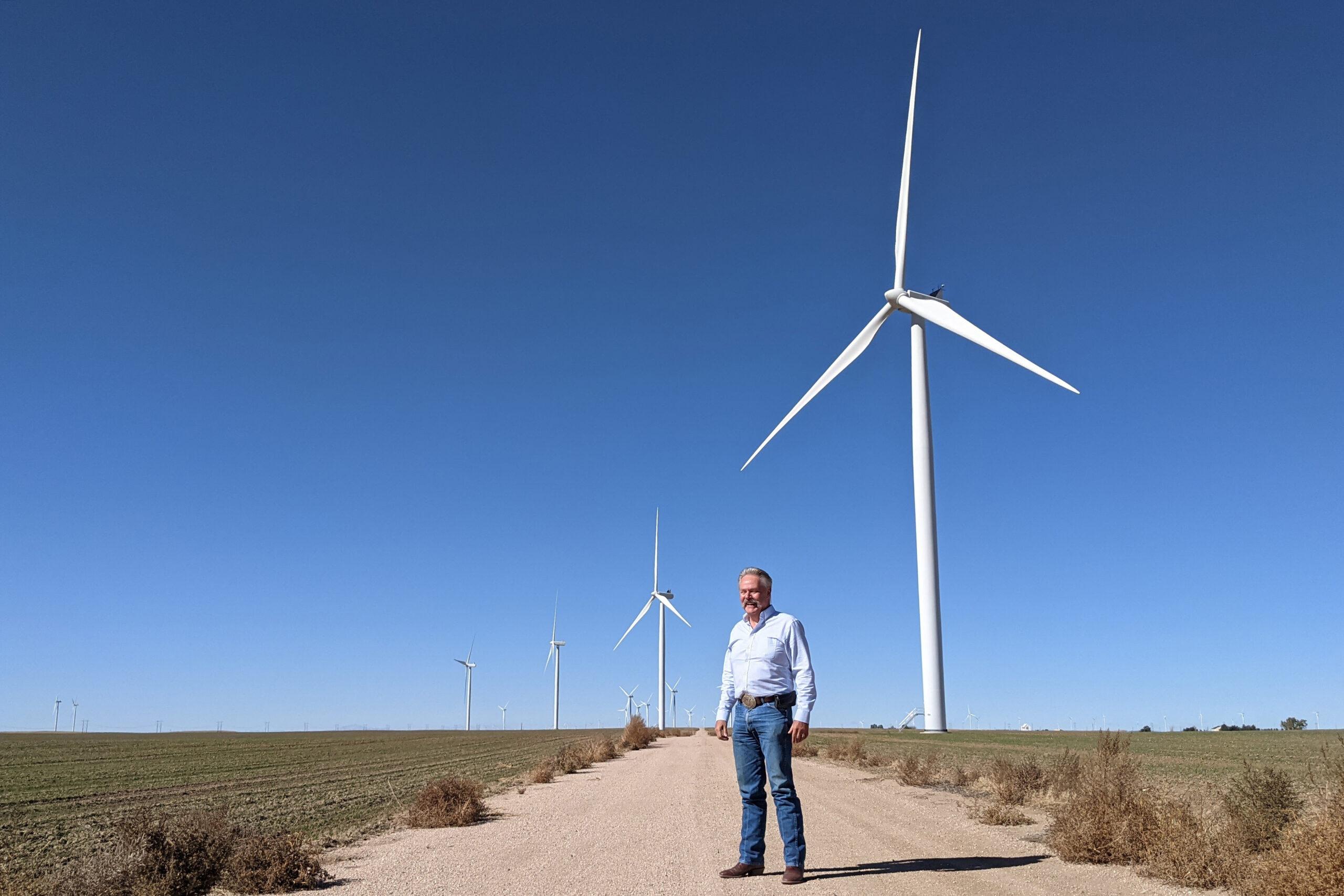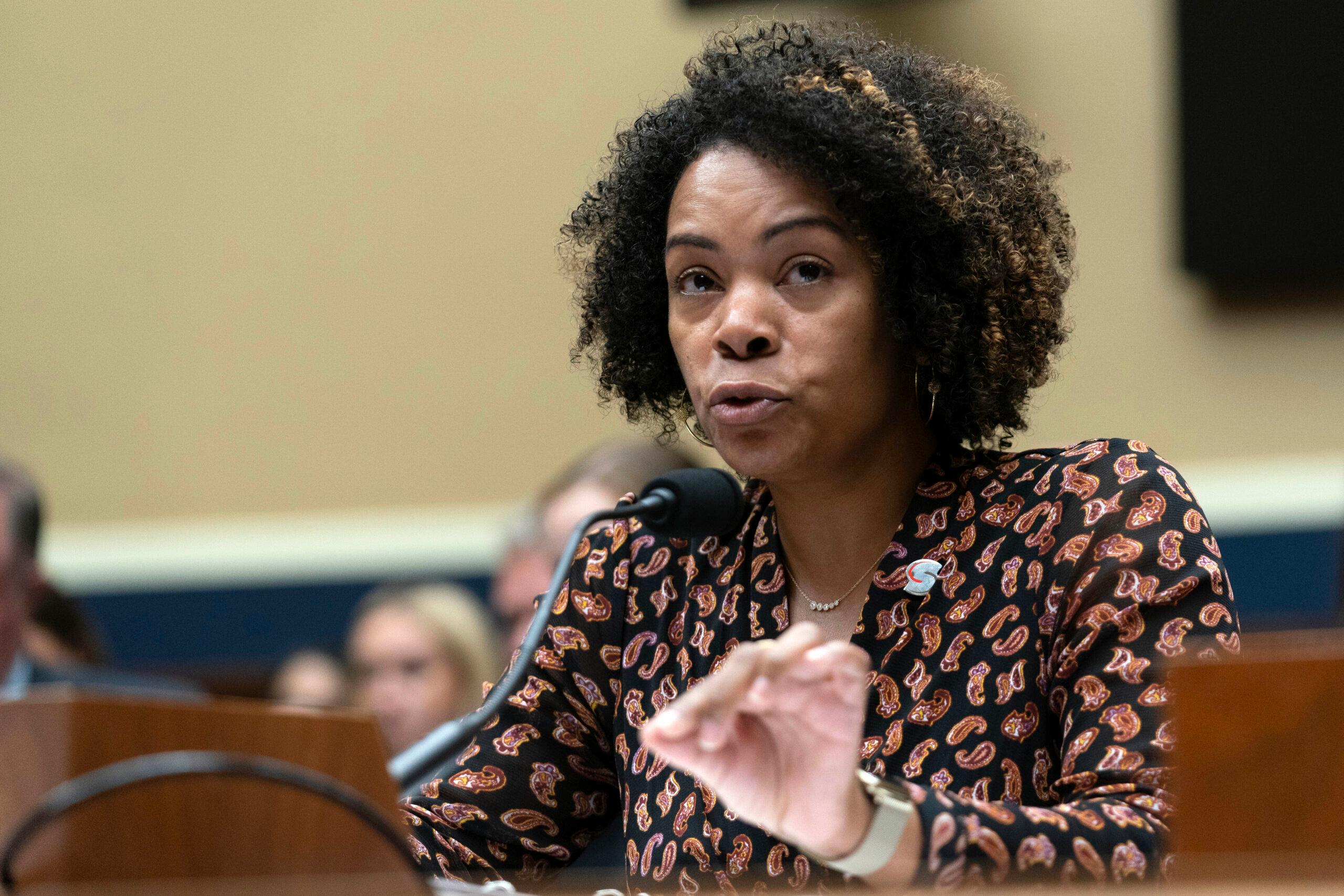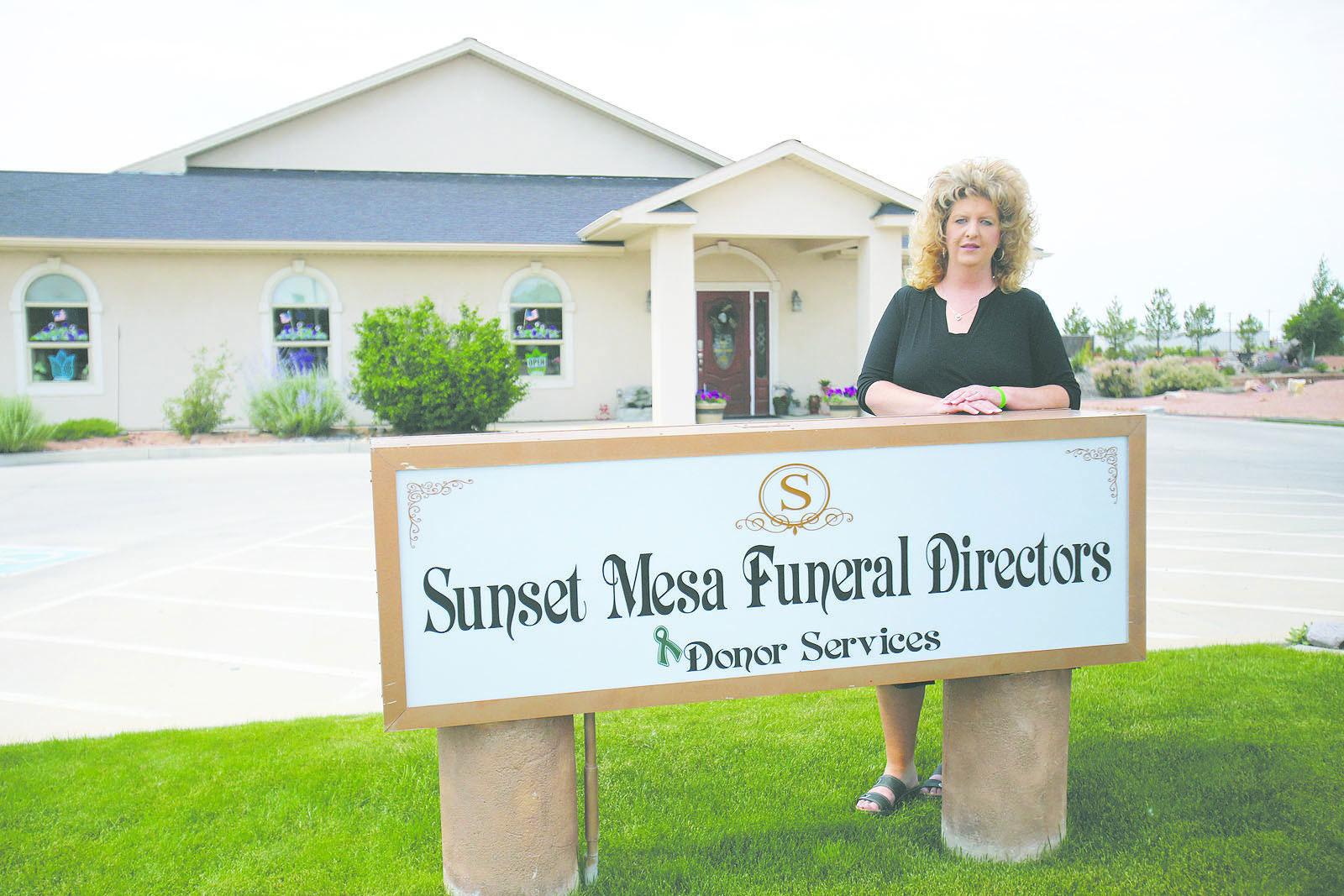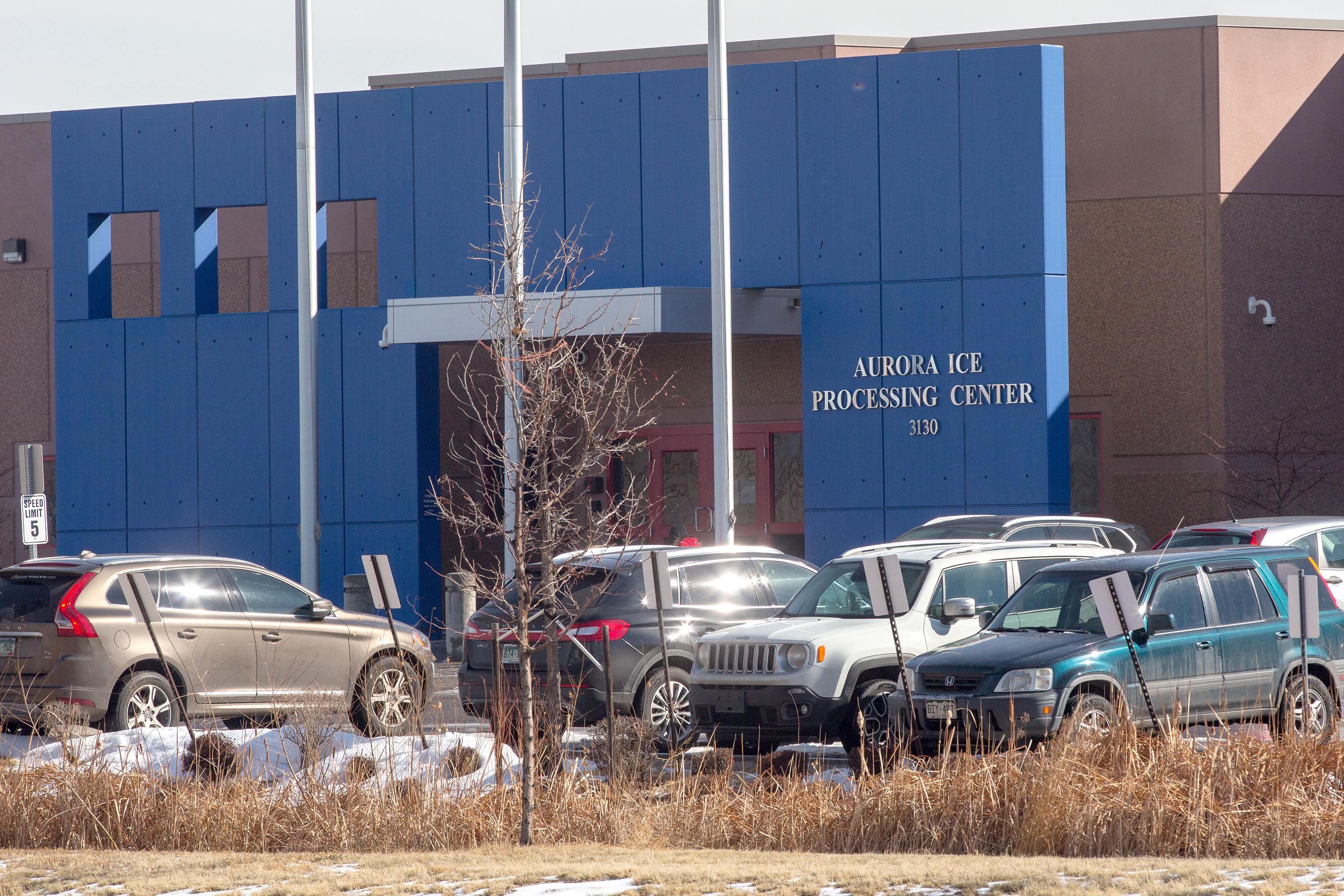
For years, Lacie Harman has watched wind turbines inch closer to her home on Colorado’s Eastern Plains. The white towers now dot the prairie from Limon north to the Wyoming border but have skipped over Washington County, where her family has farmed and ranched for five generations.
Harman is trying to keep it that way.
Earlier this year, she founded a nonprofit called Sacred Horizons to push for strict regulations on renewable energy development east of Colorado’s Front Range.
The group has helped organize local opponents who have packed county commission meetings to call for tough rules for renewables, which clean energy advocates called a “de-facto ban” on wind and solar projects.
“We have a moral obligation to preserve our land and our ecosystem,” she testified at a meeting in August. “We should approach anything with the potential to disturb or permanently wreck the Great Plains with a lot of caution.”
Those efforts fell short in the end. In early October, Washington County Commissioners adopted a looser set of rules than ones originally proposed by the county’s planning and zoning board. Harman says it’s a setback, but her organization plans to keep pushing the county to pass tougher standards.
As power companies move in, some Eastern Plains residents push back
The local resistance to renewables comes as Colorado’s biggest power companies have set their sights on the Eastern Plains, a region that offers ideal conditions for a rapid expansion of wind and solar power: a consistent breeze, sunny skies and wide-open spaces without too many people.
Those resources could be critical to Colorado’s efforts to combat climate change. To help meet targets to reduce greenhouse gas emissions, Xcel Energy has already proposed a $1.7 billion high-voltage transmission line that would circle the Eastern Plains and ferry clean electricity to the Front Range.
While some residents see those plans as a rare economic opportunity, Harman fears industrial development could spoil a region known for wheat, corn and cattle.
Ultimately, she said future wind towers would exist to generate electricity for people who don’t have to live with many of the local consequences.
“At some point, we have to stop sacrificing agricultural land for big-city living,” Harman said.
Local threats to clean energy
Washington County is one of many places where renewable energy development has met local opposition.
A 2021 survey from the Sabin Center for Climate Change Law at Columbia Law School, which develops legal strategies to support clean energy, found more than 100 examples of state and local policies to restrict new wind and solar projects across the country.
Michael Gerrard, the center’s founder and director, said local resistance to large renewable projects is understandable but risks blocking efforts to combat climate change. Gerrard said he was glad to see an opposite approach in New York, which recently passed a law to fast-track permits for renewable energy projects and preempt local opposition.
“We’re going to need to see more of that if we’re really going to achieve our objectives in moving away from fossil fuels,” Gerrard said.
A similar effort could be a tough sell in Colorado, where “local control” is a go-to axiom for elected leaders across the political spectrum. The term generally refers to any effort to shift power to local governments. Many environmental groups adopted it as a rallying cry in a battle to reform Colorado’s oil and gas laws, arguing cities and counties should have more control over fossil fuel development. Gov. Jared Polis signed a law overhauling Colorado’s oil and gas permitting process in 2019.
Harman doesn’t see much difference between her activism against wind and solar in Washington County and someone fighting an oil and gas well in a Denver suburb. When it comes to approving new industrial land in any community, she said strong local regulations will help ensure people are “good neighbors.”
- Nuclear power is the best way to replace the Pueblo coal plant within this decade, county tells state regulators
- How a Colorado coal plant could become a massive battery for renewable energy
- Methane from abandoned coal mines could be key to fight climate change — if only it made more money
- The Southern Ute Reservation could get a zero-emission power plant that runs on fossil fuels (yes, you read that right)
Harman’s organization hired a lawyer familiar with local oil and gas fights. Chris McGowne, now a private attorney in Kansas, worked until July as the Colorado government affairs director for the American Petroleum Institute, the oil and gas industry’s biggest trade group.
McGowne said he left the lobbying job months before signing on with Sacred Horizons and said there are no financial connections between the group and any part of the fossil fuel industry. McGowne said the Washington County group is simply trying to avoid local impacts from renewable energy projects: blocked views, road use and low-frequency noise from turbines.
“If we’re going to develop oil and gas in a manner that’s protective of public health, safety, welfare and the environment, I don’t see why wind energy or solar energy would be any different,” he said.
Opportunities for taxes and profit
Kipp Parker can see about a dozen wind turbines from his kitchen window. He grows and harvests wheat on land shared with the Rush Creek Wind Project, a collection of 300 towers Xcel Energy built across four Colorado counties.
Parker said the spinning blades are somewhat “hypnotizing,” but isn’t bothered by the sight of the turbines. The towers also remind him of the main benefit of the wind farm: regular lease payments from the utility company.
“I’m a capitalist,” Parker said. “I invest money in the farm. If we can develop resources that are not specifically related to agriculture, that’s a win-win deal.”
The potential financial benefits of renewable energy extend far beyond Parker’s farm. A 2019 report from the National Renewable Energy Laboratory in Golden estimated the Rush Creek would generate $45 million in land lease payments over its lifetime — and $64.5 million in local property taxes.
Those numbers appeared to be on the mind of Washington County’s commissioners as well.
After approving the less-restrictive regulations on wind and solar projects, Commissioner Tony Wells read a public statement explaining his vote: “We have tried to keep our Main Streets in Akron and Otis going, but it is hard without money.”









